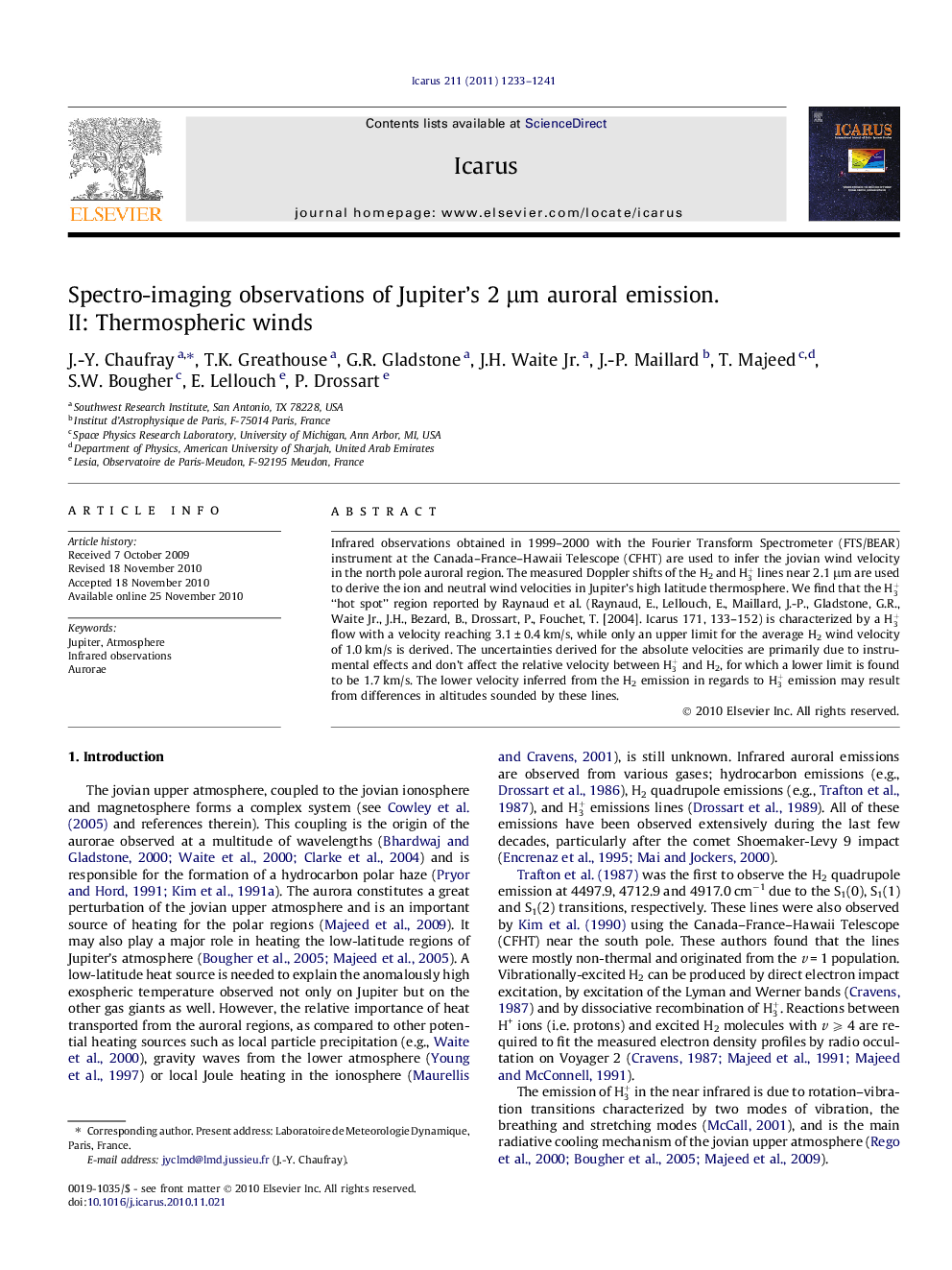| Article ID | Journal | Published Year | Pages | File Type |
|---|---|---|---|---|
| 1773952 | Icarus | 2011 | 9 Pages |
Infrared observations obtained in 1999–2000 with the Fourier Transform Spectrometer (FTS/BEAR) instrument at the Canada–France–Hawaii Telescope (CFHT) are used to infer the jovian wind velocity in the north pole auroral region. The measured Doppler shifts of the H2 and H3+ lines near 2.1 μm are used to derive the ion and neutral wind velocities in Jupiter’s high latitude thermosphere. We find that the H3+ “hot spot” region reported by Raynaud et al. (Raynaud, E., Lellouch, E., Maillard, J.-P., Gladstone, G.R., Waite Jr., J.H., Bezard, B., Drossart, P., Fouchet, T. [2004]. Icarus 171, 133–152) is characterized by a H3+ flow with a velocity reaching 3.1 ± 0.4 km/s, while only an upper limit for the average H2 wind velocity of 1.0 km/s is derived. The uncertainties derived for the absolute velocities are primarily due to instrumental effects and don’t affect the relative velocity between H3+ and H2, for which a lower limit is found to be 1.7 km/s. The lower velocity inferred from the H2 emission in regards to H3+ emission may result from differences in altitudes sounded by these lines.
Research highlights► We analyze infrared observations of the jovian auroral regions. ► We derive H3+ and H2 wind velocity from Doppler shift analysis. ► We observe a fast H3+ wind and a slow H2 wind in a hot spot region. ► We conclude that the H2 and H3+ lines sound different altitudes.
